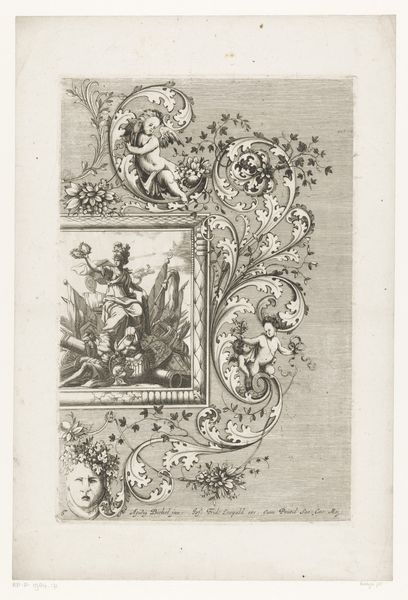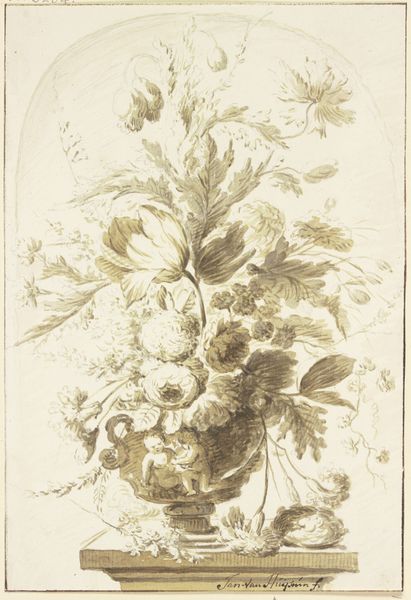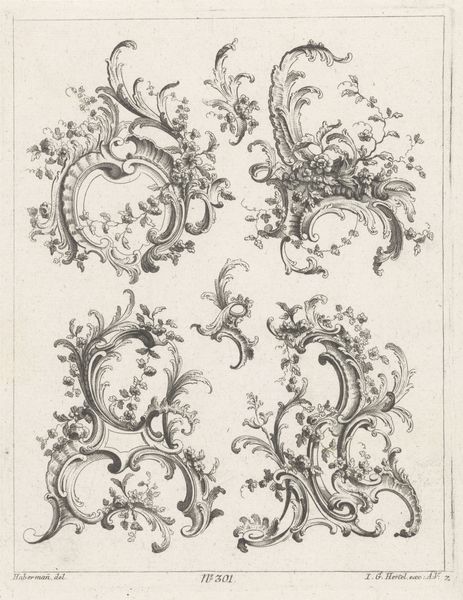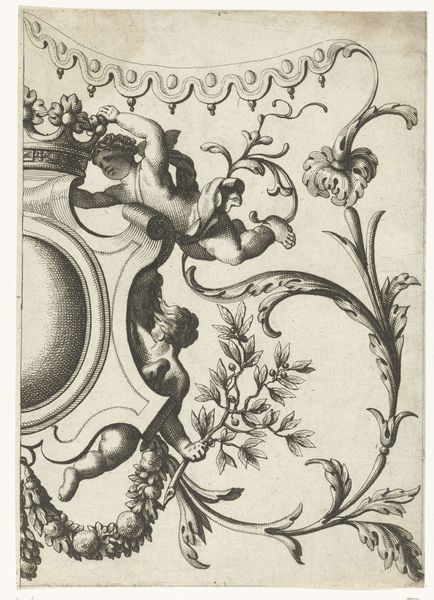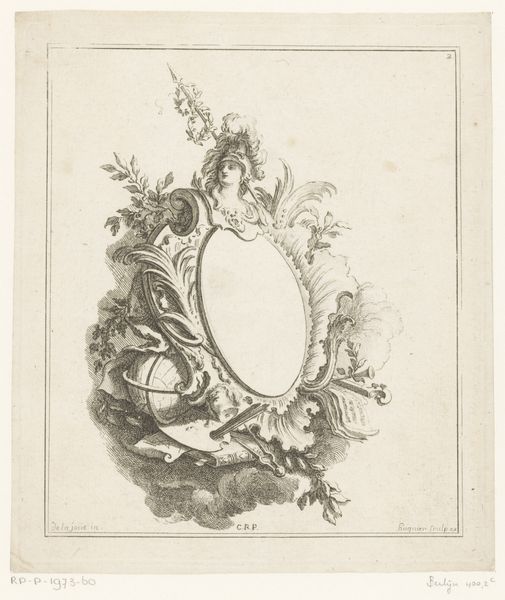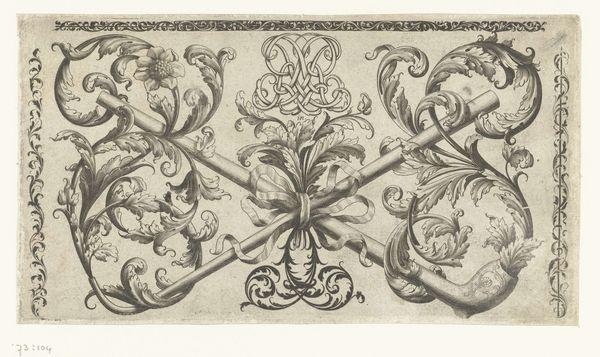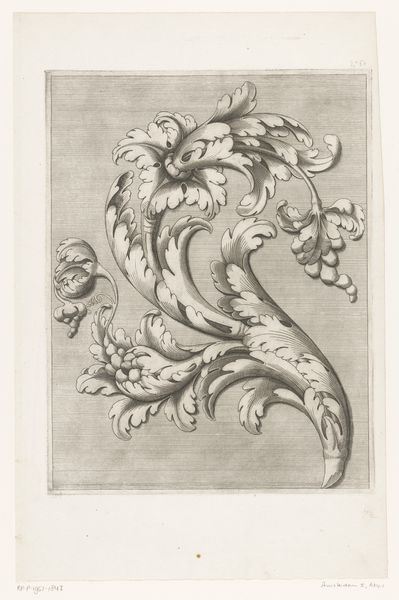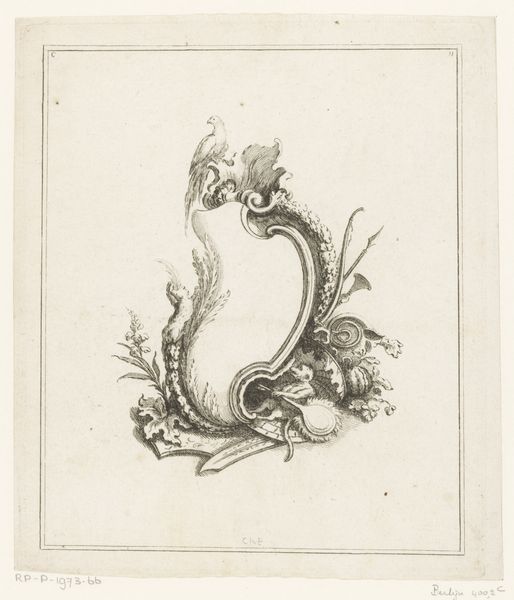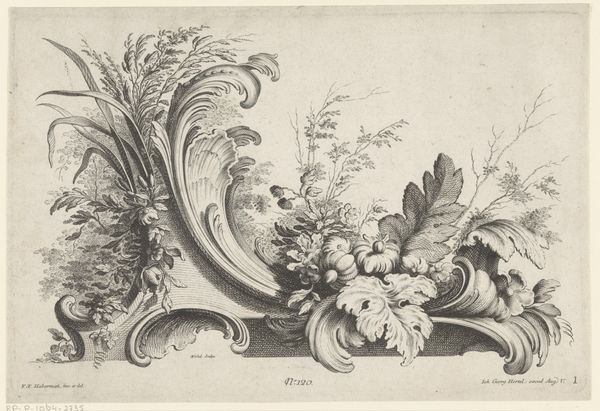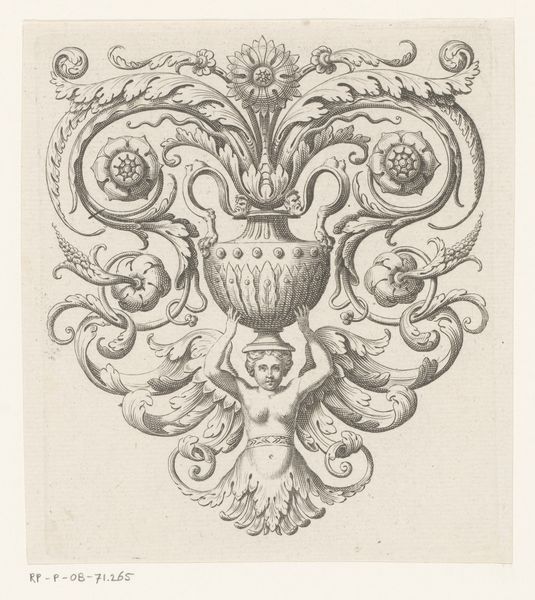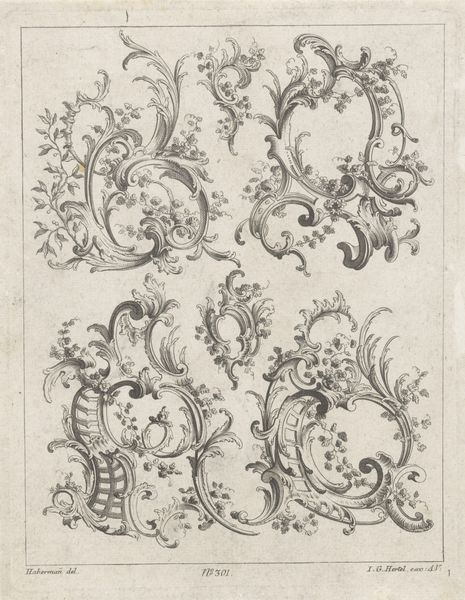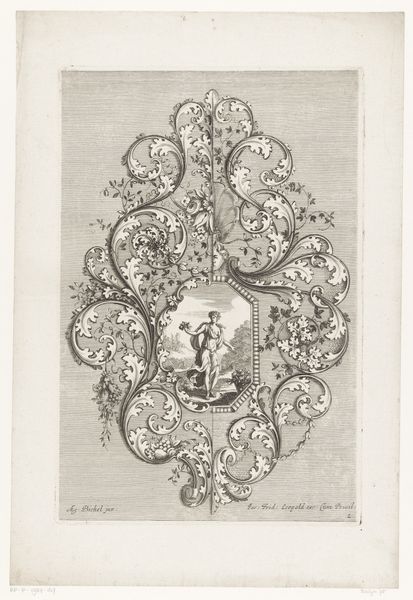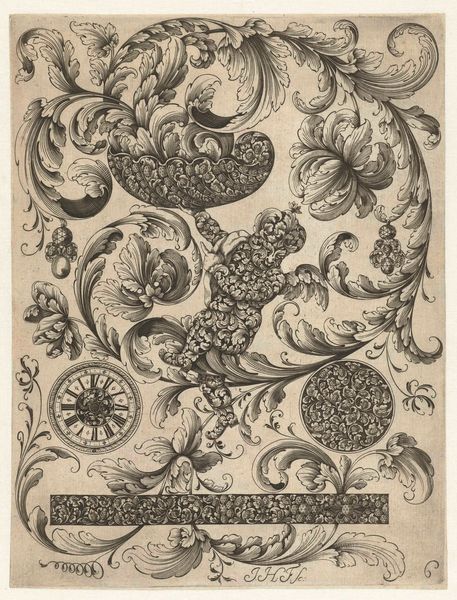
print, engraving
#
baroque
# print
#
form
#
geometric
#
line
#
engraving
Dimensions: height 280 mm, width 231 mm
Copyright: Rijks Museum: Open Domain
Cesare Domenichi etched this decorative panel depicting a fruiting grape vine in 1616. In Christian iconography, grape vines represent the blood of Christ and the Eucharist. The fruit is associated with abundance, fertility, and the promise of salvation. This motif echoes through art history. We see it in Roman frescoes, where grapes symbolize Dionysian revelry and earthly pleasures. Consider the “Feast of Bacchus” by Titian, in which the god is surrounded by grapes. Its intoxicating power is celebrated. Over time, this symbol shifted. In medieval tapestries, grape vines were intertwined with Christian symbolism to represent divine grace. Such recurrent imagery is no coincidence. These symbols are carriers of cultural memory, speaking to our collective subconscious. They trigger primal emotions and desires, reminding us of our shared human experience. The grape vine persists, bearing witness to the ever-evolving dance between the sacred and the profane.
Comments
No comments
Be the first to comment and join the conversation on the ultimate creative platform.
